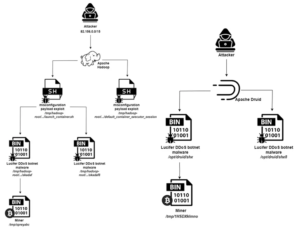The Modern Day Warrior: Integrating Sun Tzu’s Wisdom with Contemporary Hacking Techniques
The Modern Day Warrior: Integrating Sun Tzu’s Wisdom with Contemporary Hacking Techniques
In today’s digital landscape, the art of hacking mirrors the ancient strategies of warfare articulated by Sun Tzu in The Art of War. Just as Sun Tzu’s teachings have guided military leaders through centuries, they also offer profound insights for understanding and mastering modern hacking techniques. This article explores how Sun Tzu’s principles can be applied to the realm of contemporary hacking, turning today’s hackers into modern-day warriors.
Understanding the Battlefield: Digital Terrain
Sun Tzu’s Insight:
“Know your enemy and know yourself and you can fight a hundred battles without disaster.”
Contemporary Application: In the world of hacking, understanding the digital landscape—your “terrain”—is crucial. This includes knowledge of network architecture, software vulnerabilities, and organizational security practices. Hackers, like warriors, must thoroughly research their target systems to identify weaknesses and opportunities. This involves understanding the technology stack, potential entry points, and existing defenses.
Strategy and Planning: Preparation is Key
Sun Tzu’s Insight:
“The skillful fighter puts himself into a position which makes defeat impossible, and does not miss the moment for defeating the enemy.”
Contemporary Application: Successful hackers meticulously plan their attacks, leveraging reconnaissance to gather as much information as possible before striking. This phase involves social engineering, scanning for vulnerabilities, and mapping the target’s digital infrastructure. By preparing thoroughly, hackers can position themselves to exploit weaknesses effectively and avoid detection.
Deception and Misdirection: The Art of Distracting the Enemy
Sun Tzu’s Insight:
“All warfare is based on deception. Hence, when we are able to attack, we must seem unable; when using our forces, we must appear inactive; when we are near, we must make the enemy believe we are far away; when far away, we must make him believe we are near.”
Contemporary Application: In hacking, deception is a critical tactic. This can involve creating false trails, using fake identities, or employing misleading tactics to divert attention from the true objectives. Techniques such as phishing, where attackers disguise themselves as trustworthy entities, and planting decoy malware to mislead security teams, exemplify this principle.
Exploiting Weaknesses: Precision Strikes
Sun Tzu’s Insight:
“Attack him where he is unprepared, appear where you are not expected.”
Contemporary Application: Effective hackers identify and exploit the most vulnerable points in a system. This might involve targeting outdated software, poorly configured systems, or unpatched security holes. Precision strikes, where hackers focus on high-value targets or critical weaknesses, can lead to successful breaches with minimal effort.
Adaptability: Flexibility in Tactics
Sun Tzu’s Insight:
“Be extremely subtle, even to the point of formlessness. Be extremely mysterious, even to the point of soundlessness.”
Contemporary Application: The ability to adapt to changing conditions is crucial in hacking. Modern-day hackers must remain flexible, adjusting their tactics based on the responses and countermeasures of their targets. This could mean changing attack vectors, using new exploits, or modifying techniques in real-time to evade detection and maintain access.
Psychological Warfare: Manipulating Perceptions
Sun Tzu’s Insight:
“The greatest victory is that which requires no battle.”
Contemporary Application: Psychological manipulation is a powerful tool in hacking. By creating confusion, spreading misinformation, or exploiting human psychology, hackers can achieve their objectives without direct confrontation. Social engineering, such as convincing employees to divulge sensitive information, and leveraging psychological pressure to force compliance, illustrate the power of psychological tactics.
Defending Against Attack: Lessons in Countermeasures
Sun Tzu’s Insight:
“If you know the enemy and know yourself, you need not fear the result of a hundred battles.”
Contemporary Application: For defenders, understanding hacking tactics and techniques is as important as knowing one’s own system. This involves implementing robust security measures, continuously monitoring for threats, and staying informed about emerging vulnerabilities and attack methods. Regular security audits, employee training, and incident response planning are essential to defend against sophisticated attacks.
Conclusion: The Modern Warrior’s Path
In the digital age, hackers embody the role of the modern-day warrior, applying ancient principles of strategy and deception to navigate the complexities of cyberspace. By integrating Sun Tzu’s timeless wisdom with contemporary hacking techniques, they exemplify the fusion of historical strategy with modern technology.
Whether as attackers or defenders, understanding these principles can enhance strategic thinking and operational effectiveness. For hackers, mastering the art of modern warfare requires not only technical skills but also a deep appreciation of strategic foresight, adaptability, and psychological acumen. For defenders, embracing these lessons offers a path to stronger security and greater resilience against the evolving threats of the digital realm.







